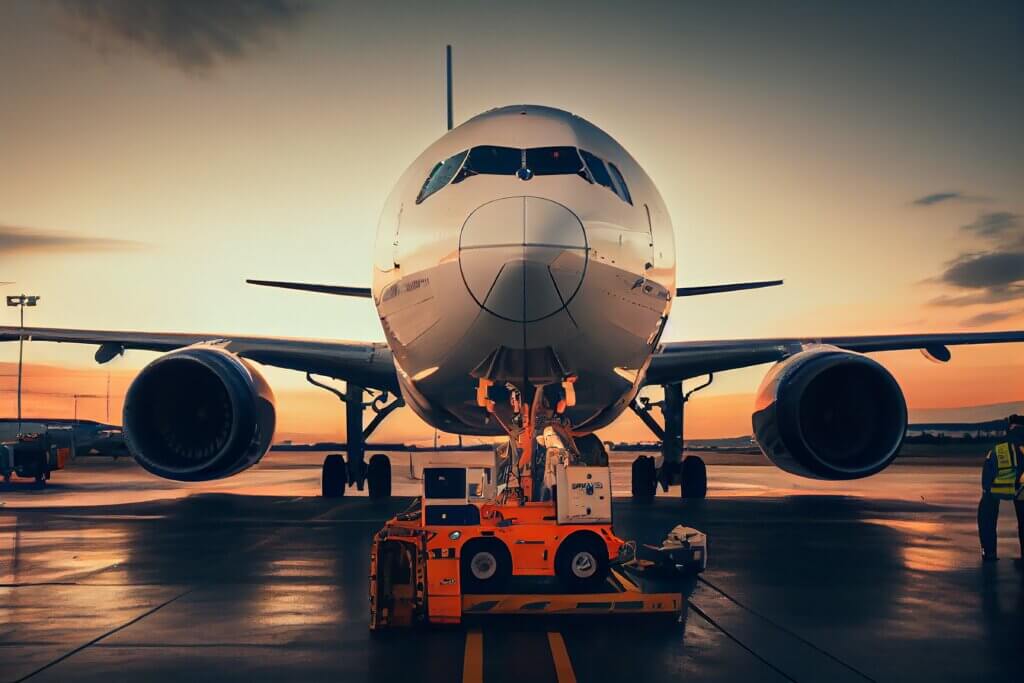
Freight Meaning in English:
Freight refers to bulk goods or cargo that are transported from one location to another. It involves the movement of goods through various transportation modes such as trucks, ships, airplanes, and trains.
Freight plays a crucial role in the supply chain and is an essential component of the logistics industry.
Freight Meaning in Tamil:
சரக்கு (Freight) என்பது ஒரு இடத்திலிருந்து மற்றொரு இடத்திற்கு கொண்டு செல்லப்படும் மொத்த பொருட்களைக் குறிக்கிறது. கப்பல்கள், விமானங்கள், டிரக்குகள், மற்றும் ரயில்கள் போன்ற பல்வேறு போக்குவரத்து முறைகள் மூலம் பொருட்களை நகர்த்துவதை இது உள்ளடக்குகிறது.
சரக்கு விநியோகச் சங்கிலியில் முக்கிய பங்கு வகிக்கிறது மற்றும் தளவாடத் தொழிலின் இன்றியமையாத அங்கமாகும்.
Freight Meaning in Hindi:
माल ढुलाई से तात्पर्य थोक माल या कार्गो से है जो एक स्थान से दूसरे स्थान तक ले जाया जाता है। इसमें विभिन्न परिवहन साधनों जैसे ट्रक, जहाज, हवाई जहाज और ट्रेन के माध्यम से माल की आवाजाही शामिल है।
माल ढुलाई आपूर्ति श्रृंखला में एक महत्वपूर्ण भूमिका निभाती है और लॉजिस्टिक्स उद्योग का एक अनिवार्य घटक है।
Freight Meaning in Marathi:
मालवाहतूक म्हणजे एका ठिकाणाहून दुस-या ठिकाणी नेल्या जाणार्या मोठ्या प्रमाणात माल किंवा मालवाहतूक. यामध्ये ट्रक, जहाजे, विमाने आणि ट्रेन अशा विविध वाहतूक पद्धतींद्वारे मालाची हालचाल समाविष्ट असते.
पुरवठा साखळीमध्ये मालवाहतूक महत्त्वपूर्ण भूमिका बजावते आणि लॉजिस्टिक्स उद्योगाचा एक आवश्यक घटक आहे.
Freight Meaning in Malayalam:
ചരക്ക് എന്നത് ഒരു സ്ഥലത്ത് നിന്ന് മറ്റൊരിടത്തേക്ക് കൊണ്ടുപോകുന്ന ബൾക്ക് ചരക്കുകളോ ആണ്. ട്രക്കുകൾ, കപ്പലുകൾ, വിമാനങ്ങൾ, ട്രെയിനുകൾ എന്നിങ്ങനെ വിവിധ ഗതാഗത മാർഗ്ഗങ്ങളിലൂടെയുള്ള ചരക്കുകളുടെ നീക്കം ഇതിൽ ഉൾപ്പെടുന്നു.
ചരക്ക് വിതരണ ശൃംഖലയിൽ നിർണായക പങ്ക് വഹിക്കുന്നു, ലോജിസ്റ്റിക് വ്യവസായത്തിന്റെ അത്യന്താപേക്ഷിതമായ ഘടകമാണ്.
Freight Types:
Full Truck Load (FTL): This refers to a shipment that occupies the entire capacity of a truck trailer (Know more about the full truck load for better insight)
Less Than Truck Load (LTL): It involves the transportation of smaller shipments that do not require a full truckload (Know more about less than truck load for better insight)
Air Freight: The transportation of goods via airplanes, which offers fast delivery for time-sensitive shipments.
Ocean Freight: Transportation of goods through cargo ships, commonly used for international shipping.
Rail Freight: The movement of goods via trains, often used for long-distance transportation of bulk commodities.
Freight Charges Meaning in English:
Freight charges are rates applied for transporting goods from one location to another. They can vary based on factors such as distance, weight, volume, transportation mode, and market conditions.
Freight charges are typically negotiated between the shipper and the carrier, or it may be standardized for certain routes.
Refer the different truck rates for more details.
Freight Charges Meaning in Tamil:
சரக்குக் கட்டணம் என்பது சரக்குகளை ஒரு இடத்திலிருந்து மற்றொரு இடத்திற்கு கொண்டு செல்வதற்கான கட்டணங்களை குறிக்கிறது. தூரம், எடை, அளவு, போக்குவரத்து முறை மற்றும் சந்தை நிலைமைகள் போன்ற காரணிகளின் அடிப்படையில் சரக்குக் கட்டணங்கள் மாறுபடலாம்.
ஏற்றுமதி செய்பவருக்கும் கொண்டு செல்பவருக்கும் இடையே சரக்கு கட்டணங்களின் பேச்சுவார்த்தை நடத்தப்படுகிறது. அல்லது அவை சில வழிகளுக்கு ஏற்ப தரப்படுத்தப்படலாம்.
Freight Charges Meaning in Hindi:
माल ढुलाई शुल्क माल को एक स्थान से दूसरे स्थान तक ले जाने के लिए लागू की जाने वाली दरें हैं ! वे दूरी, वजन, मात्रा, परिवहन मोड और बाजार स्थितियों जैसे कारकों के आधार पर भिन्न हो सकते हैं।
माल ढुलाई शुल्क पर आमतौर पर शिपर और वाहक के बीच बातचीत की जाती है, या इसे कुछ मार्गों के लिए मानकीकृत किया जा सकता है।
Example:
“Imagine a manufacturing company based in Chicago that produces electronic goods. They have just received a large order from a retailer in Los Angeles. To fulfil the order, the manufacturing company needs to transport their products from their warehouse in Chicago to the retailer’s distribution center in Los Angeles.
They engage a freight forwarding company to handle the logistics of the shipment. The freight forwarding company arranges for a truck to pick up the goods from the manufacturing company’s warehouse and transport them to the destination.
The truck, loaded with the electronic goods, begins its journey, crossing several states and covering a distance of over 2,000 miles. During transportation, the freight is tracked using GPS technology, providing real-time updates to both the manufacturing company and the retailer.
After a few days, the truck arrives at the retailer’s distribution center in Los Angeles, and the goods are unloaded and checked for quality. The successful transportation of the freight allows the manufacturing company to meet the retailer’s demand and ensures a smooth supply chain operation.”
In this example, the freight refers to the electronic goods being transported from the manufacturing company’s warehouse in Chicago to the retailer’s distribution center in Los Angeles.
The logistics company manages the transportation process, utilizing a truck for the shipment and employing tracking technology to monitor the freight’s movement.
FAQs:
- What do freight charges mean?
Freight charges are rates applied for transporting goods from one location to another.
- What are the other words used to describe freight?
Cargo, shipment, goods, load, consignment, haul, freightage, and merchandise.
- What are the factors that influence freight charges?
The freight charges are influenced by various factors such as distance, weight, volume, transportation mode, and market conditions
